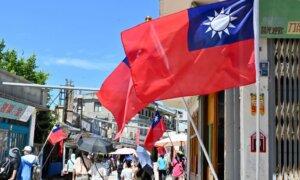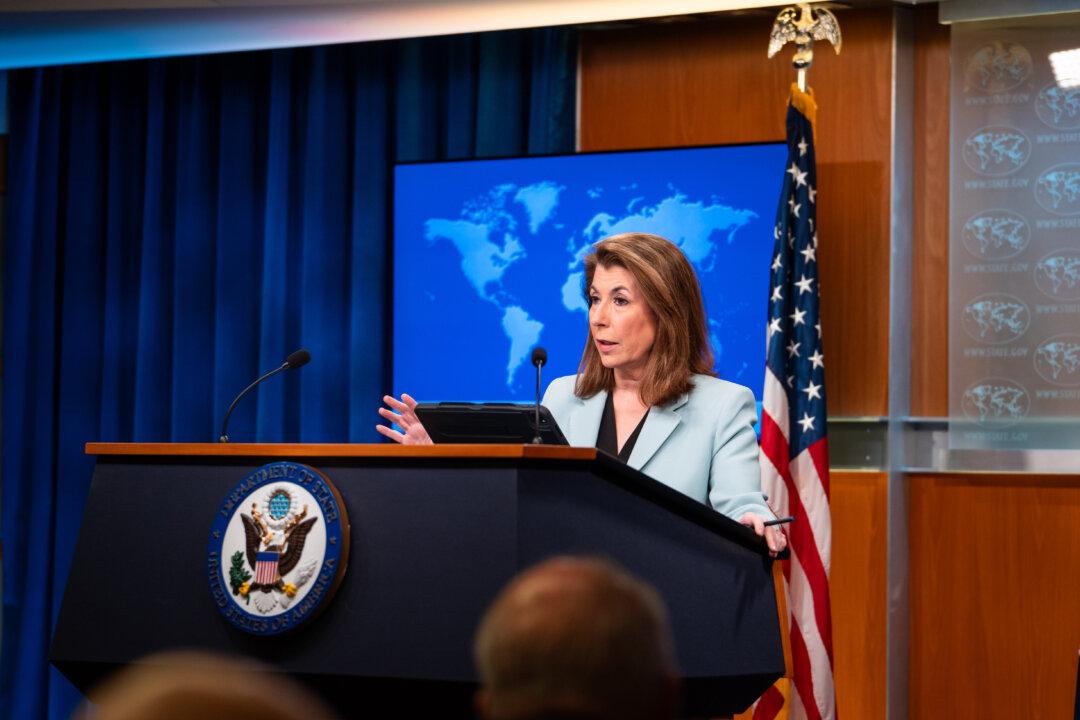The Chinese regime’s ‘aggressive military activities and rhetoric toward Taiwan only serve to exacerbate tensions,’ the U.S. State Department said.
The Trump administration and the European Union have expressed concerns over communist China’s large-scale drills in the airspace and waters around Taiwan.
The
military drills, which involved the Chinese Navy, Air, Ground, and Rocket forces, started on April 1. The exercises continued on April 2, with long-range live-fire drills in the East China Sea.
Taiwan’s presidential office has criticized the Chinese regime, calling it an “internationally recognized troublemaker” that resorts to military provocations and maritime gray-zone harassment to “blatantly challenge the international order.”
On April 1, White House press secretary Karoline Leavitt
said that President Donald Trump “is emphasizing the importance of maintaining peace in the Taiwan Strait, encouraging the peaceful resolution of these cross-strait issues, [and] reiterating our opposition to any unilateral attempts to change the status quo by force or coercion.”
Tammy Bruce, spokesperson for the U.S. State Department, said in a
statement on April 1 that the Chinese regime’s “aggressive military activities and rhetoric toward Taiwan only serve to exacerbate tensions and put the region’s security and the world’s prosperity at risk.”
“In the face of China’s intimidation tactics and destabilizing behavior, the United States’ enduring commitment to our allies and partners, including Taiwan, continues,” Bruce said.
“The United States supports peace and stability across the Taiwan Strait and opposes unilateral changes to the status quo, including through force or coercion.”
The European External Action Service, the EU’s diplomatic arm, issued a
statement on April 1 urging “all parties to exercise restraint.”
“The EU has a direct interest in the preservation of the status quo in the Taiwan Strait. We oppose any unilateral actions that change the status quo by force or coercion,” the EU agency stated.
The Chinese Communist Party (CCP) views Taiwan as its own territory and has repeatedly threatened to seize the island by force. Taiwan is a de facto independent country with a democratically elected government, constitution, and military.
The United States is Taiwan’s most important ally and biggest arms supplier, even though the two sides are not official diplomatic allies.
Military Drills
Beijing has not formally named the April 1 drills. On April 2, China’s eastern theater command gave a code name, Strait Thunder-2025A, for its long-range live-fire drills into the waters of the East China Sea.“The drills involve precision strikes on simulated targets of key ports and energy facilities, and have achieved desired effects,” the command stated, without elaborating.
The Taiwanese Defense Ministry stated that over the 24 hours that ended at 6 a.m. local time on April 2, the Chinese military drills involved 76 military aircraft, 15 military vessels, and four other ships.
Also during this period, four Chinese coast guard ships intruded on the waters surrounding the islands of Dongyin and Wuqiu, which are part of Taiwan’s Matsu archipelago,
according to Taiwan’s coast guard administration. The agency stated that the deployment of these ships was part of China’s military drills.
Between roughly 6 a.m. and 1:30 p.m. local time on April 1, the Taiwanese Defense Ministry spotted 27 Chinese aircraft, 21 warships, and 10 coast guard vessels near the island, it stated.
As for China’s live-fire drills, the Taiwanese ministry said those did not take place near the island.
“No matter what the name is, it cannot cover up the naked provocative nature of the drills and their mentality of threatening Taiwan’s people,” Taiwan Defense Ministry spokesperson Sun Li-fang said at a
press conference on the afternoon of April 1 about Beijing’s code names for its military drills.
Taiwanese Foreign Minister Lin Chia-lung issued a
statement expressing gratitude to the White House and the U.S. State Department for their support in maintaining peace in the Taiwan Strait. Lin also urged the international community to jointly express concern over the CCP’s military threats, lawfare, and other gray-zone tactics against Taiwan.
One example of the CCP’s lawfare against Taiwan is detaining Taiwanese people traveling to China, Hong Kong, or Macau for questioning or subjecting them to trials.
The timing of China’s recent military drills follows U.S. Defense Secretary Pete Hegseth’s
visit to Japan.
Lin Ying-yu, assistant professor at the Graduate Institute of International Affairs and Strategic Studies at Taiwan’s Tamkang University,
told Taiwan’s government-run Central News Agency that Beijing was using the exercises to “test the U.S. bottom line” on Taiwan before a potential meeting between Trump and CCP leader Xi Jinping.
In early March, Trump suggested that Xi may travel to the United States “in the not-too-distant future” for talks.
The Chinese drills have also drawn criticism from Rep. Michael McCaul (R-Texas), a member of the House Foreign Affairs Committee, who
wrote on social media platform X that the CCP “is once again showing its true colors by bullying Taiwan.”
“The CCP’s increased aggression and belligerence in the South China Sea threaten U.S. interests and risk a broader conflict. Strengthening the AUKUS security pact will be key to deterring such behavior and securing lasting peace in the Indo-Pacific and beyond,” McCaul wrote, referring to the
trilateral security partnership between the United States, the UK, and Australia.
Reuters and the Associated Press contributed to this report.







